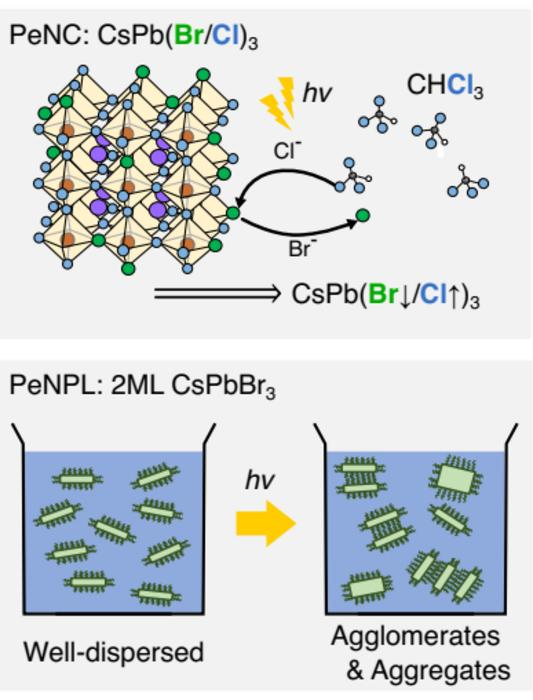
A staff on the Institute for Fundamental Science (IBS) Heart for Molecular Spectroscopy and Dynamics (CMSD) has developed a brand new spectroscopic approach to watch modifications in perovskite nanomaterials in actual time underneath mild publicity. The analysis was led by Professor Tai Hyun Yoon from the Division of Physics and Director Minhaeng Cho, Professor of Chemistry, each at Korea College.
The strategy, referred to as asynchronous and interferometric transient absorption spectroscopy (AI-TA), allows speedy commentary of structural modifications and excited-state dynamics in light-responsive supplies. It addresses key limitations of standard ultrafast spectroscopy, which may harm light-sensitive samples and infrequently requires lengthy information assortment instances.
We will now concurrently observe not simply how a cloth reacts to mild but additionally the way it transforms in the course of the response itself. This makes AI-TA a strong device for real-time evaluation of advanced nanoscale processes.
Minhaeng Cho, Director, IBS Heart for Molecular Spectroscopy and Dynamics (CMSD)
Perovskite supplies are thought-about promising for future optoelectronic units, similar to LEDs and photo voltaic cells. Their service dynamics may be studied utilizing standard femtosecond (10-15 seconds) laser-based methods, which seize each chemical and bodily properties.
Nevertheless, these properties are extremely delicate to exterior elements like mild, making it tough to review how the supplies behave in sensible situations. Particularly, the laser pulses utilized in ultrafast spectroscopy can harm or alter the pattern.
The IBS staff addressed this problem by lowering the measurement time utilizing AI-TA. This technique makes use of two exactly synchronized lasers to seize detailed spectral and temporal information on the fabric’s transient state. It allowed the researchers to look at processes similar to cost service motion, modifications in composition, and structural reorganization over timescales starting from femtoseconds to a number of minutes.
AI-TA is evolving right into a time-resolved spectroscopic approach that leverages the precision of optical frequency comb expertise to research molecular reactions within the femtosecond regime.
Tai Hyun Yoon, Examine Co-Corresponding Creator and Professor, Korea College
The researchers utilized AI-TA to 2 sorts of perovskite programs. Within the first, they studied light-induced halide substitution in cesium lead halide nanocrystals. They discovered that growing the chloride-to-bromide ratio led to greater bandgap energies and quicker charge-carrier dynamics.
Within the second, they examined light-driven modifications and clustering in colloidal perovskite nanoplatelets. The outcomes confirmed how power loss in sizzling carriers assorted with agglomeration and revealed a posh relationship between optical conduct and structural modifications.
AI-TA provides a brand new option to research the dynamics of novel supplies and varied chemical substances that may be simply altered by mild and different elements. This experiment marks step one in showcasing the potential of AI-TA, and we look ahead to increasing its functions in future analysis.
Dr. Gi Rim Han, Examine First Creator, IBS Heart for Molecular Spectroscopy and Dynamics (CMSD)
This work improves the flexibility to trace real-time modifications in light-sensitive supplies throughout laser measurements. Past perovskites, the AI-TA technique may additionally help analysis in areas similar to quantum supplies, catalysis, and next-generation optoelectronic and photonic programs.
Journal Reference:
Han, G. R., et al. (2025). In situ and real-time ultrafast spectroscopy of photoinduced reactions in perovskite nanomaterials. Nature Communications. doi.org/10.1038/s41467-025-60313-3